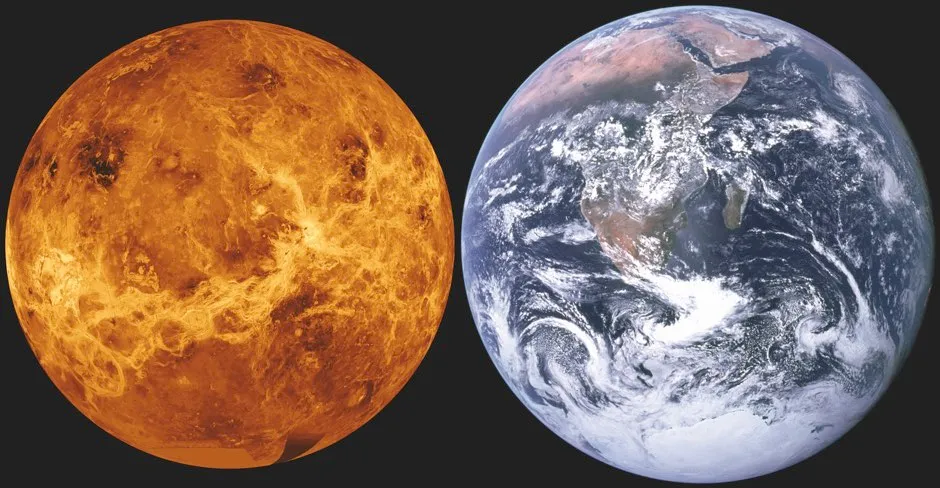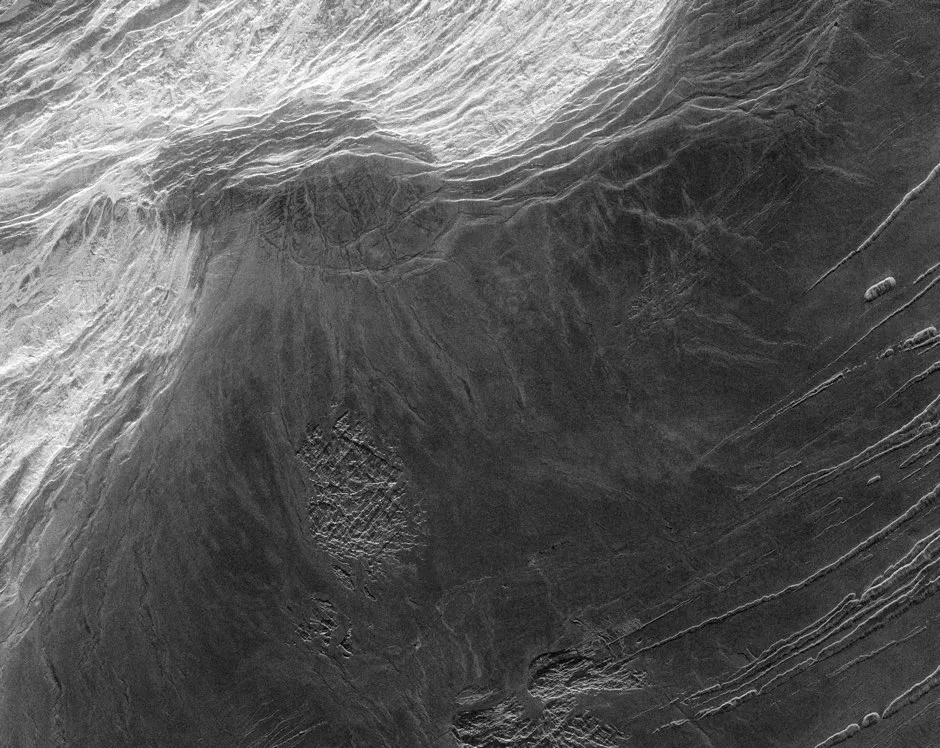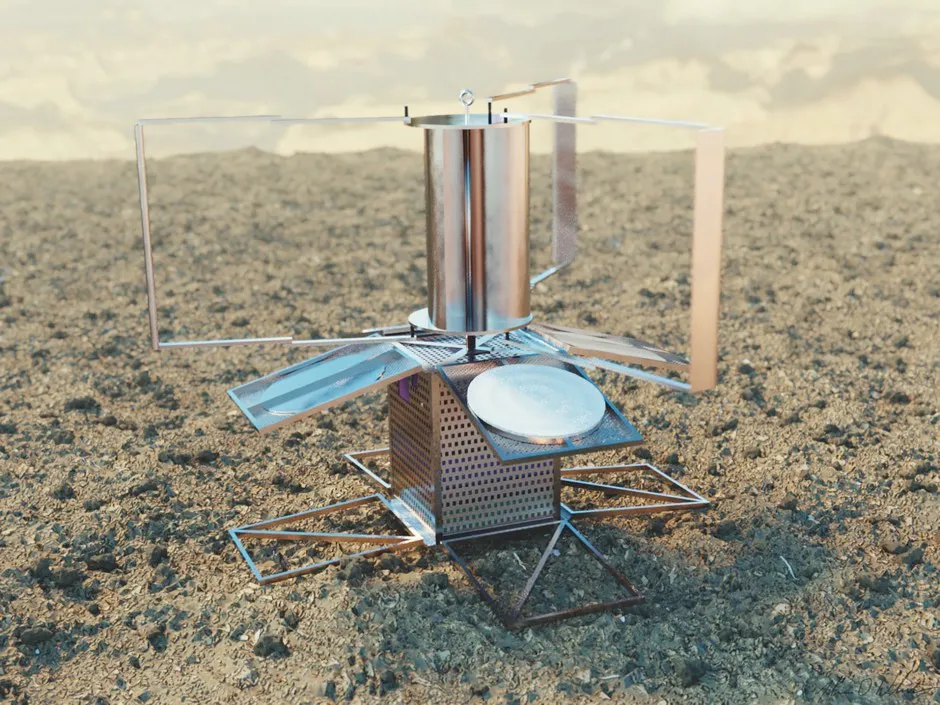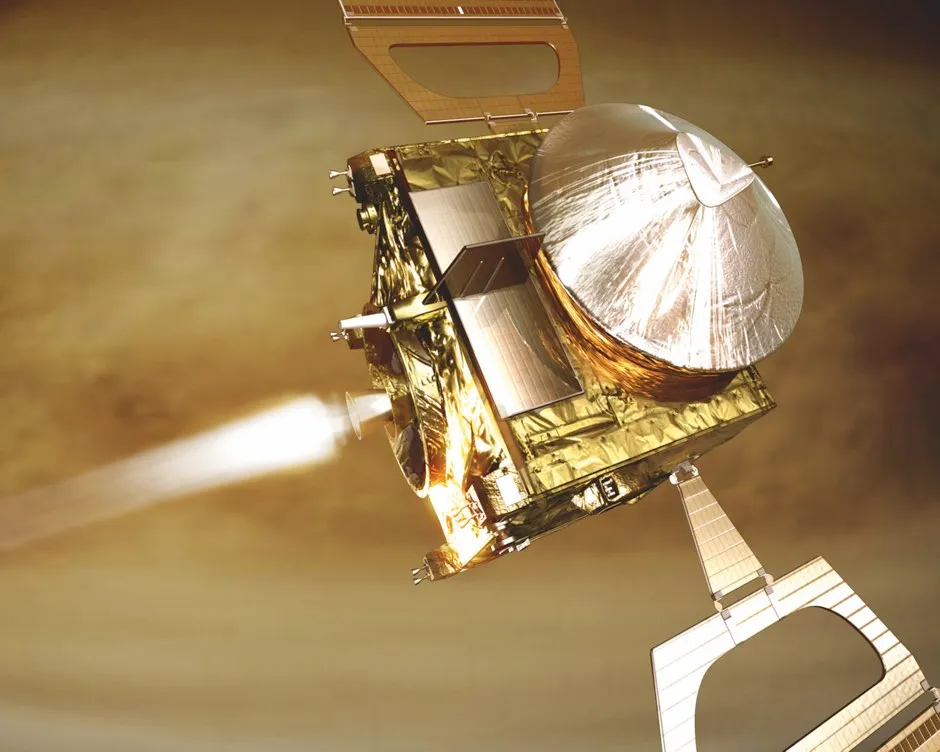We have a toxic twin. Venus is the closest planet to Earth, both in size and often in distance, yet the surface conditions couldn’t be more different. One planet is home to abundant life; the other is hellishly hot, choked by an atmosphere of carbon dioxide that creates a surface pressure equivalent to being almost one kilometre underwater on Earth.
However, things weren’t always this way. Once upon a time, Venus might have had a similar climate to Earth, complete with water oceans and plate tectonics.
Finding out what went wrong with Venus is the question behind a fresh surge in missions to explore the planet. It’s an endeavour that promises to shed new light on how planets become habitable, and could even guide our search for life elsewhere in the cosmos.
Over the past 20 years, exploration of Venus has fallen out of favour. Missions to Mars, Jupiter, Saturn and Pluto have dominated the headlines, and poor old Venus has become something of a forgotten planet. But this wasn’t always the case. In fact, in the early days of space exploration, Venus was our first target…
Early explorers to Venus
In 1962, NASA’s Mariner 2 spacecraft flew past Venus, becoming the first space probe to encounter another planet. Five years later, the Soviet Venera 4 probe entered the Venusian atmosphere, becoming the first to enter the atmosphere of another world.
The same year, NASA’s Mariner 5 set off on the space agency’s second successful flyby mission. The exploration of Venus was in full swing.

What followed was a series of missions, some failures but mostly successes, to find out more about this planet that, at first glance, appeared so similar to our own. But from the 1980s onwards, the pace slowed down considerably. NASA’s last dedicated mission to Venus was the Magellan spacecraft, which launched in 1989.
The reason for this drop-off? As the data started to come back from our twin planet, astronomers interpreted the high temperatures, suffocating atmosphere and impact craters they saw on the surface as evidence that Venus was biologically and geologically dead – and therefore of limited interest to scientists searching for extraterrestrial life or Earth-like geology.
Read more about Venus:
The pristine condition of most of Venus’s impact craters, for instance, indicated a comparatively young surface, which suggested that some kind of global, volcanic event in the planet’s history had completely resurfaced the planet, resulting in a dramatic reduction in geological activity.
We now have better topography maps for Pluto than we do for Venus, so it’s time for an update.
Dr Sue Smrekar
This idea, however, is still up for debate. “Since then, a lot of people have done [computer] modelling that indicates that this is a very unlikely interpretation,” says Dr Sue Smrekar, a planetary geophysicist at NASA’s Jet Propulsion Lab, and self-confessed ‘Venusophile’.
Instead of one huge event, says Smrekar, “you could have ‘steady state’ [smaller and reoccurring] processes of volcanism to produce the impact crater record.” Settling this debate, and discovering the true story of Venus’s history, is the motivation behind a proposed NASA mission that’s being led by Smrekar, called VERITAS.
Same planet, different climate
Today, the average surface temperature on Venus is 462°C. But the planet wasn’t always such a hot mess. When the Solar System was in its early stages, four and a half billion years ago, things looked different.
“You’d see water and a pleasant climate on Mars, Earth, and Venus, most likely,” says Dr Richard Ghail at Royal Holloway, University of London, who is lead scientist of a proposed European Space Agency (ESA) mission to Venus, called EnVision.

Two billion years later, it was a different story. Mars was basically dead and Earth was a frozen snowball, says Ghail. Earth was active as a planet, in the geological sense, but frozen solid, resembling how Jupiter’s moon Europa looks today.
“Venus probably looked like a hot version of the Earth,” says Ghail. “It still had oceans but they were evaporating… it was starting to get really unpleasant.” At this point, “you’d think all three of these planets were doomed biologically. And yet, Earth came out of that and into this new phase where life appeared,” he adds.
Understanding Venus’s geological history will be crucial to piecing together the contrasting fortunes of the two planets. While Venus is not known to be geologically active today, its past patterns of volcanic activity will be a vital clue in helping us find out more about the planet.
Exploration of Venus: the highlights so far
- Dec 1962NASA’s Mariner 2 is the first successful flyby mission of Venus – or any planet – sending back information about the Venusian atmosphere.
- Oct 1967Venera 4 is the first successful Soviet mission to Venus. The space probe carries out the first chemical analysis of the planet’s atmosphere, revealing it to be mostly carbon dioxide.
- Jul 1972The Soviet Venera 8 is the first space probe to successfully land on the surface of Venus. It sends back data for 50 minutes.
- Oct 1975Venera 9 is the first spacecraft to orbit Venus, while its accompanying lander is the first to send pictures from the surface of another planet.
- Dec 1978Pioneer Venus 1 is NASA’s first Venus orbiter, carrying out a range of tasks including mapping the planet’s surface and measuring its magnetic field.
- Jun 1985The Soviet space probes Vega 1 and Vega 2 send landers down to Venus, before using the planet’s gravity to carry out a flyby of Halley’s Comet.
- Aug 1990NASA’s Magellan spacecraft enters orbit around Venus, where it stays for four years, carrying out high-resolution radar mapping of the planet’s entire surface.
- Apr 2006ESA’s Venus Express enters orbit around Venus, and is the first spacecraft to carry out long-term observations of the planet’s atmospheric dynamics. It finds evidence for an ozone layer, lightning, and a huge, shape-shifting vortex at the planet’s south pole.
- Dec 2015The Japanese Akatsuki space probe enters orbit around Venus after a previous failed attempt in 2010. It is currently studying the planet’s atmospheric dynamics and cloud structure.
The amount of volcanism could be linked to the amount of toxic sulphur dioxide in Venus’s atmosphere, for example, which is a key reason why it is uninhabitable. “Ultimately, we want to understand why Venus and Earth are different,” says Smrekar.
The surface of Venus has not been mapped since NASA’s 1989 Magellan mission. “We now have better topography maps for Pluto than we do for Venus, so it’s time for an update,” says Smrekar.
This is where VERITAS (Venus Emissivity, Radio Science, InSAR, Topography, and Spectroscopy) comes in.
Read more about future space missions:
- 10 future space missions to look forward to
- Space exploration: how might the next 50 years progress?
The aim of this mission, which is currently being considered for funding by the agency’s Discovery Program (a series of lower-cost missions to explore the Solar System), is to use radar and measurements of the planet’s thermal properties to produce high-resolution topography maps and information on rock types across the planet’s entire surface.
This will help to pin down the nature of Venus’s volcanic past, but also answer the question of whether it ever had plate tectonics, and what role water played in its history.

Venus’s surface has a handful of huge plateaus. “If these features are similar in composition and origin to those on the Earth, it tells us that Venus underwent some very Earth-like processes, and that water was really important in shaping the [Venusian] surface,” says Smrekar.
She adds that by examining the types of rock on Venus, we could discover whether or not water was once there. For example, certain rock types can only be created when lava meets water. Meanwhile, studying whether Venus’s surface is broken up into continent-like features will show whether it once had plate tectonics.
On Earth, plate tectonics play an important role in the carbon cycle, helping to remove carbon dioxide from the atmosphere. So a lack of plate tectonics on Venus could help to explain why this planet’s atmosphere contains so much carbon dioxide (96.5 per cent), which is in turn responsible for Venus’s runaway greenhouse effect.
Head to head: Venus and Earth
Average distance from Sun
- Venus: 108,200,000km
- Earth: 149,600,000km
Radius
- Venus: 6,052km
- Earth: 6,371km
Mass
- Venus: 4.87 × 1024kg
- Earth: 5.97 × 1024kg
Average surface temperature
- Venus: 462°C
- Earth: 14°C
Proportion of carbon dioxide in atmosphere
- Venus: 96.5 per cent
- Earth: 0.04 per cent
Surface pressure
- Venus: 92 bar
- Earth: 1.01 bar
VERITAS is just one of a suite of missions being proposed to explore Venus. Another in NASA’s Discovery Program is DAVINCI (Deep Atmosphere Venus Investigation of Noble gases, Chemistry, and Imaging).
If selected, this mission would involve dropping a descent probe through the atmosphere and measuring the chemical composition down to the surface in high-fidelity, providing information on the origin and evolution of the Venusian atmosphere, and helping to answer the question of why it’s different to that of Earth.
DAVINCI lost out to two other missions, Psyche and Lucy, in the 2015 round of proposals, but was resubmitted in July this year.
Meanwhile, another proposed NASA project, not connected to the Discovery Program, is LLISSE (Long-Life In-situ Solar System Explorer). This began in 2017 as a project to develop small landers and instruments capable of surviving on the surface of Venus for days, as opposed to the minutes of previous missions.
Read more about space exploration:
- Race to the Moon: Inside China's plans to build a lunar base
- The unintended consequences of privatising space
“This capability will revolutionise our understanding of Venus by allowing us to see how conditions change over time, giving us new insight into the dynamic processes occurring in Venus’s atmosphere,” says Dr Lori Glaze, director of NASA’s Planetary Science Division, and part of NASA efforts to support LLISSE.
“Such information is critical to getting at the history of water and possibly habitable periods in Venus’s past. But this requires electronics that can survive temperatures of over 470°C.”
Standard, silicon electronics break down quickly under these conditions, so LLISSE would use cutting-edge silicon carbide semiconductors. The aim is to have a probe on the surface of Venus, collecting data about the planet’s weather in situ – something that would be a breakthrough moment for space exploration.
The outlook of future missions to Venus
Presently, none of these missions are set in stone. Out of all the proposed Solar System missions in NASA’s Discovery Program in 2019, five will reach the next stage of development, and one will ultimately go ahead, with a launch slated for 2021. Meanwhile, it’s hoped that the LLISSE probe will be ready to go in 2023, likely taken to Venus by another mission.
ESA also wants to study the Venusian surface using radar. The EnVision spacecraft would spend four years orbiting the planet, looking at how much volcanism is taking place and whether the surface is moving, and characterising the interior structure of the planet, too.

All of this will help to build a more detailed picture of the differences – and similarities – between Venus and Earth. “It would be really exciting to do real comparisons with Earth,” says Ghail, referring to the fact that the Venus data will be of a similar resolution to the geological data we already have for Earth.
Part of the EnVision mission would include trying to spot the Soviet Venera landers, which sent images of the surface back to Earth. “We want to identify where they are [after they crash-landed on the surface], and then image their immediate surroundings to make sense of the images,” says Ghail.
This will enable researchers to link the chemistry of the rocks the landers analysed to a specific area on Venus.
Destination Venus: the future of exploration
- Shukrayaan-1Possible launch date: Early 2020sSpace agency: ISRO (India)Aim of mission: Orbiter to study the surface and atmosphere of Venus, potentially including radar, a plasma wave detector and a cloud monitoring camera.
- VERITASPossible launch date: 2021Space agency: NASAAim of mission: Orbiter to capture global, high-resolution maps of topography and rock type on the planet’s surface.
- DAVINCIPossible launch date: 2021Space agency: NASAAim of mission: Descent probe to understand the history of Venus’s atmosphere and study the chemical processes in the lower atmosphere.
- LLISSEPossible launch date: 2023Space agency: NASAAim of mission: Small probe capable of surviving on the surface of Venus for days, capturing information about the planet’s weather.
- EnVisionPossible launch date: 2032Space agency: ESAAim of mission: Orbiter to study Venus’s atmosphere, history and climate using radar imaging.
- Venera-DPossible launch date: 2026 - 2031Space agency: Roscosmos (Russia)Aim of mission: Orbiter, for detailed observations of the planet’s atmosphere; lander, to spend at least two hours on the surface.
EnVision is currently in its first phase of study, which will end in spring 2021. If it is selected, it will launch in 2032, arriving at Venus after a five-month cruise. But NASA and ESA are not the only space agencies with their eyes on Venus.
Russia wants to continue its exploration of the planet with Venera-D, a proposed mission which includes an orbiter and a lander. And the Indian Space Research Organisation (ISRO) is planning an orbiter too, called Shukrayaan-1.
All of these missions promise to help us answer the question of how Venus became so different from Earth. But they also have their eye on an even bigger question: is there life elsewhere in the cosmos? Once we have a better idea of the processes that can make a planet habitable, exoplanet hunters will have a better idea of where to look for life on other worlds.
“We need to understand what happened to Venus, and how common this fate is, to estimate how many potentially habitable planets there are,” says Prof Abel Méndez, director of the Planetary Habitability Laboratory at the University of Puerto Rico at Arecibo.

More clues will come as astronomers improve their ability to detect and measure exoplanet atmospheres. “We can’t tell the Earths from the Venuses right now,” says Méndez. A fundamental difference between the two planets is Venus’s suffocating, extra-thick atmosphere. This [thickness] is “something we can’t measure yet for any Earth-sized planet, but we are getting closer,” he says.
Once astronomers have more information about exoplanet atmospheres, they’ll be able to combine this with measurements of the planet’s distance from its host star in order to gain a better prediction of how likely it is to be habitable.
Because, as Earth and Venus have shown, distance isn’t everything. “Even Earth with a Venus-like atmosphere would be too hot for life,” says Méndez.
It may be a while before we have definitive answers to how many Venuses there are in the cosmos, and why two planets so close to each other could have such vastly different fates, but it seems that the gaze of the world’s astronomers is finally turning back towards our closest neighbour. Sometimes, it turns out that the most interesting things are lying right under our noses.
